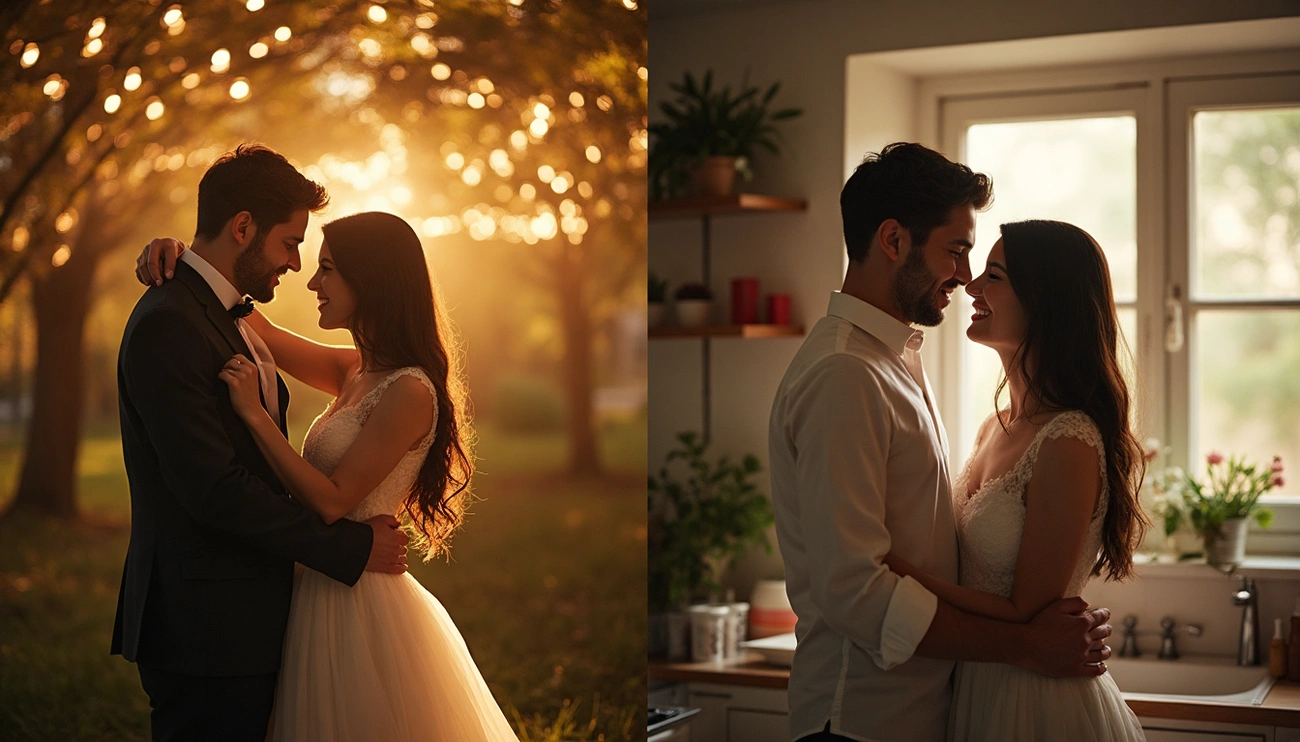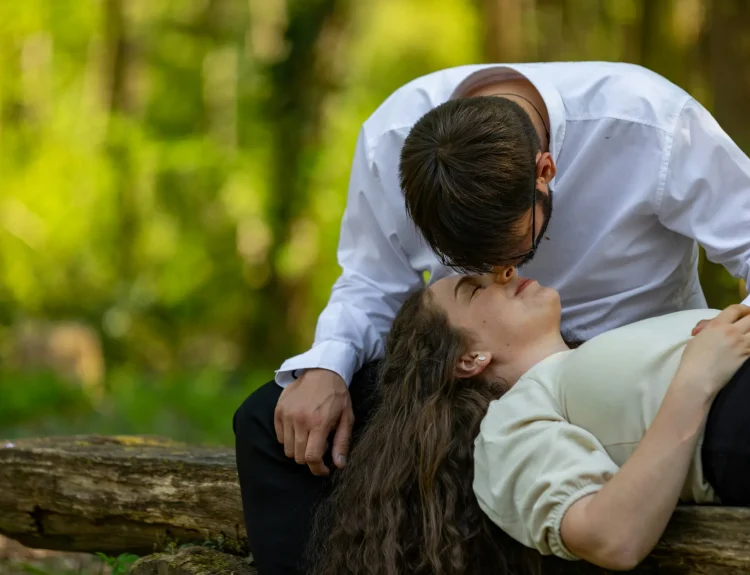Many of us think being a true romantic means grand gestures, passionate kisses in the rain, and relationships free from conflict. However, life is “too strange, sad, and scandalously ungainly to be characterized by something as unitary and singular as JOY”. This contradiction forms the heart of what it means to be genuinely romantic.
In fact, understanding what being romantic truly means requires us to look beyond Hollywood portrayals. Despite films like “True Romance” becoming cult classics, they’ve shaped unrealistic expectations about love. Rather than accepting the common belief that romantic love should come easily, we need to recognize that “true love is an active choice, that each day you must wake up and make”. A genuinely romantic person isn’t just thoughtful – they make space for both love and hate in the same room.
In this article, we’ll explore why being a true romantic involves embracing life’s contradictions, making daily choices to love someone, and sometimes, working hard to appreciate your own (and your partner’s) “wretched, inconsistent, idiotic idiosyncrasies”. We’ll share real stories that challenge the myth of effortless romance and offer a more authentic vision of what love actually looks like.

The fantasy of being a true romantic
From childhood fairy tales to adult romantic comedies, we’re constantly exposed to idealized versions of love. These stories don’t just entertain us—they actively shape our understanding of what being a “true romantic” means, often in ways that set us up for disappointment.
How movies and books shaped our early ideas
Our journey into romantic expectations begins surprisingly early. Many of us consumed Disney classics like Cinderella and The Little Mermaid as children, stories that portray “true love” in grandiose, magical terms. This early exposure to an unrealistic narrative that true love results in living “happily ever after” sets us up to strive toward an idealized version of romance that might not align with reality.
As we grow older, the media continues molding our perceptions. A University of Michigan study found that higher exposure to romantic movies correlates with stronger belief that “love finds a way”. Additionally, greater exposure to marriage-themed reality TV shows strengthens beliefs in “love at first sight” and “true love”. These aren’t just harmless fantasies—they become the templates against which we measure our own relationships.
The myth of effortless love
One of the most damaging fantasies perpetuated by romantic media is the myth that when you find “the one,” everything will effortlessly fall into place. This illusion suggests that chemistry alone sustains relationships, when in truth, even the strongest connections need nurturing.
The allure of effortless chemistry is powerful because it feels magical—like destiny. Nevertheless, this misleading narrative makes us believe love shouldn’t require work. Furthermore, it creates a dangerous expectation: if a relationship requires effort, something must be wrong.
Consider these common misconceptions about true love:
- If it’s meant to be, it should be easy
- Real love conquers all obstacles automatically
- The right relationship won’t require compromise
- Chemistry alone sustains lasting relationships
In reality, successful relationships require specific skills like emotional regulation, effective communication, and conflict resolution. These abilities don’t come naturally to most people—they must be developed intentionally.
Why we confuse romance with perfection
At the core of the romantic fantasy lies idealization—the conception of a person or situation that dwells on advantages and ignores deficiencies. Essentially, we believe the perfect partner or relationship exists, if only we can find it.
This pursuit of perfection damages relationships in several ways. According to research published in Psychological Reports, regularly watching idealized romantic content can lead viewers to adopt equally idealized notions about real-world relationships. Consequently, when faced with normal relationship challenges, we might question whether we’ve found “true love” at all.
Perfectionism gives us tunnel vision, making us blind to individuality and diversity. Moreover, in pursuing the perfect relationship, we often abandon authentic parts of ourselves to feel worthy of an ideal partner. This perfectionistic mindset turns dating into something depersonalized and monotonous, causing us to reject perfectly good relationships because they don’t match our fantasy template.
The true romantic paradox lies in recognizing that genuine romance flourishes not in perfection, but in accepting each other’s beautifully flawed humanity—something our media-saturated culture rarely celebrates.

What does being romantic really mean?
Beyond the fairy tales and cinematic montages lies a deeper understanding of romance—one that’s far more nourishing and sustainable than the fantasy version we often chase. The true romantic meaning isn’t found in grand gestures or passionate beginnings, although those certainly have their place. Instead, it exists in the daily choice to love someone completely.
Romantic love vs. real love
Romantic love often feels like magic—a powerful chemical cocktail that makes our hearts pound and our palms sweat. The initial attraction phase is characterized by increased energy, racing heart, and overwhelmingly positive feelings. This early stage is what psychologist Dr. Daniel Amen describes as “not so much of an emotion as a motivational drive that is part of the brain’s reward system”.
Whereas romantic love focuses on excitement and novelty, real love develops gradually through shared experiences. The triangular theory of love identifies three components: intimacy, passion, and commitment. While romantic love emphasizes passion, true love balances all three elements.
As one relationship expert plainly states, “True love isn’t this fireball from the sky, this balcony moment, a look exchanged between two people. That is romantic love. Actual true love in a partnership is work, compromise, acceptance, forgiveness, and the decision to continue loving each other even when the ride gets bumpy”.
True romantic meaning in everyday life
Primarily, being a true romantic means expressing love consistently through small, meaningful actions. It’s not about Italian restaurants and Valentine’s Day but creating moments that foster genuine connection. Authentic romance thrives on being present and fully engaged with your partner.
Consider these expressions of true romance in daily life:
- Making morning coffee for your partner (practiced by 27% of couples in one survey)
- Holding hands as a “love toll” when getting in and out of the car
- Setting out medications or filling a water bottle before bed
- Simply being there during difficult times, taking your partner to appointments when they’re ill
The difference between these gestures and grand romantic displays? They happen on ordinary days, without expectation of reward or recognition. They simultaneously communicate “I see you” and “I choose you”—today and every day.
The role of emotional honesty
Ultimately, being a true romantic requires emotional honesty—creating a relationship where both people can be authentic. According to Dr. Sue Johnson, founder of Emotionally Focused Therapy, “most arguments in relationships are protests over emotional disconnection”. Underneath conflicts, partners are asking fundamental questions: “Do I matter to you? Can I count on you?”
Emotional honesty builds trust because it creates psychological safety. This doesn’t mean sharing every thought without filter, yet it does require vulnerability. As relationship researcher John Bowlby emphasized, “our ability to relate to others and create close, intimate connections is the ultimate barometer of healthy functioning”.
The most intimate relationships aren’t those without conflict but those where partners feel safe enough to reveal themselves fully. Couples who share the greatest intimacy are “not the ones who experience the least conflict or the fewest upsets, but are rather those who are the most willing to relate with both honesty and sensitivity”.
Being a true romantic, therefore, means creating a relationship where both people can be fully themselves—flaws, fears, dreams and all.
Real love stories that challenge the myth
Real relationships rarely follow the scripted path of romantic movies. Instead, they twist and turn through unexpected territories, often becoming more meaningful because of—not despite—their complications.
A marriage that started with signs and ended in struggle
Barbara and Rick’s love story defies the “happily ever after” narrative. In 1969, they married in a Catholic church with 170 guests witnessing their vows. Despite building their dream house together, cracks appeared in their seemingly perfect foundation. Barbara felt increasingly unhappy. “I had this illusion of me being a cutesy little housewife meeting my husband at the door with supper all ready,” she recalls.
By 1972, they divorced, occasionally dating until 1974 before completely separating. For decades, they lived entirely separate lives—both remarrying other people and raising families. Whenever they spotted each other around town, they actively avoided contact.
After both losing their spouses to illness, fate intervened. Rick saw Barbara’s husband’s obituary and reached out. “We talked about all the stuff that we didn’t talk about the first time,” Barbara explains. At ages 68 and 71, they remarried—with the same best man and maid of honor from their original wedding. Rick acknowledges, “My mistake was not letting her know my feelings and assuming she just knew”.
The Irish boyfriend who rhapsodized about everything
Unlike stories of love rekindled, sometimes romance falters precisely because someone seems too perfect. Consider the experience of falling for someone who constantly expresses adoration. One relationship expert notes that excessive idealization often creates pressure rather than comfort.
Early attraction’s chemical cocktail makes everything seem magical—racing hearts, overwhelming positive feelings, and heightened energy. Yet this intensity can mask incompatibilities and prevent authentic connection. A partner who rhapsodizes about everything might actually be avoiding genuine intimacy through performative affection.
How ambivalence can still be romantic
Contrary to popular belief, feeling uncertain about your relationship doesn’t mean it’s doomed—it might actually indicate depth. “Relational Ambivalence” describes experiencing contradictory thoughts and feelings toward someone we love. This natural phenomenon exists in every relationship configuration, yet we pressure romantic love particularly to rise above it.
Many couples remain stuck in relationship ambivalence for years, unclear whether to keep trying or let go. Yet holding ambivalence can itself represent a form of radical acceptance. Perhaps the highest form of love isn’t unconditional perfection but rather seeing our partners as flawed and still holding them in high regard.
True romantic meaning emerges not from certainty but from choosing someone daily—quirks, complications, and contradictions included.
The hidden work behind lasting love
Behind every enduring relationship lies invisible work that rarely makes it into romantic narratives. What distinguishes genuine partnerships isn’t the absence of problems but how couples navigate them together.
Why true romance includes conflict
Contrary to popular belief, conflict isn’t a sign that something’s wrong—it’s a natural part of any intimate relationship. Research shows that some amount of conflict is normative and inevitable when two lives become interdependent. A true romantic understands that disagreements signal opportunities for growth.
Conflict arises precisely because your lives are intertwined. As one communication professor notes, “Conflict only comes about when two people whose lives are interdependent hold goals that conflict with one another”. In essence, no conflict would mean no genuine connection.
The healthiest couples don’t avoid disagreements—they develop skills to address them constructively. Indeed, conflict can be quite healthy for relationships since it signals a need for change. Without these necessary friction points, relationships stagnate and partners grow apart.
Learning to love through discomfort
Growing through relationship challenges requires emotional maturity. Studies indicate that when conflict is approached as a learning opportunity, it leads to deeper understanding, improved communication, and progress toward shared goals.
The discomfort of conflict serves as a gateway to intimacy. As counterintuitive as it seems, working through challenging moments together creates stronger bonds than perpetual harmony ever could. When partners courageously address issues together, they demonstrate commitment to the relationship’s longevity.
Researcher Russell Grieger identifies four possible outcomes from disagreements, with only one—working toward an equally beneficial resolution—leading to relationship growth. This win-win approach requires both partners to prioritize the relationship above individual “rightness.”
The power of choosing love daily
The belief that relationships “shouldn’t need effort” robs them of vitality. In fact, relationship expert Aaron Beck calls this one of the most destructive beliefs: “If we need to work at it, there’s something seriously wrong with our relationship”.
In reality, choosing a romantic partner means choosing a set of problems to work through together. What separates lasting relationships from failed ones isn’t the absence of challenges but the willingness to face them daily.
Simple daily choices demonstrate true love:
- Practicing active listening even when conversations are difficult
- Being kind even when you don’t feel like it
- Responding with positivity during challenging moments
- Choosing openness when vulnerability feels risky
- Acting unselfishly without expectation of return
The secret to lasting love isn’t finding a conflict-free relationship but understanding that “a no-effort relationship is not a great relationship; it’s a doomed relationship”. What creates genuine romance is the daily recommitment to see your partner fully—flaws and all—and choose them anyway.
Letting go of the Hollywood version
Contrary to popular culture’s portrayal, a true romantic understands that real relationships develop beyond the closing credits. Living a genuine love story requires more courage than any Hollywood script could capture.
Why ‘happily ever after’ is misleading
The notion of “happily ever after” belongs exclusively in fairy tales. This persistent myth sets us up for disappointment when confronting real relationship challenges. Many individuals mistakenly believe marriage will magically solve their personal or emotional issues. Yet expecting perpetual bliss ignores the natural ups and downs that every relationship experiences.
A common misconception claims that romance should be easy—that true love automatically solves all problems. As Dr. Donald Baucom discovered after studying marital expectations for a decade, people ultimately get what they expect. Those with high (yet realistic) standards typically enjoy healthier relationships than those who “look the other way” and let things slide.
Replacing fantasy with emotional maturity
Emotional maturity means accepting that approximately two-thirds of relationship conflicts are perpetual. As Dr. Dan Wile notes, “When choosing a long-term partner… you will inevitably be choosing a particular set of unsolvable problems”. Mature love acknowledges these challenges without viewing them as relationship failures.
Altogether, mature partners honor one another’s dreams even when different, manage conflict constructively, and repair effectively when hurt occurs. They recognize that compromise represents strength, not weakness, in a relationship. This maturity stands in sharp contrast to movie portrayals where love seemingly resolves all issues without effort.
How to be romantic without losing yourself
Being romantically involved shouldn’t require abandoning your identity. Primarily, maintaining separate interests allows both partners to grow individually while also developing as a couple. Remember the saying that ‘you are the average of the five people you spend the most time with’—your significant other significantly influences who you become.
Subsequently, don’t abandon friends simply because you’re in a relationship. Balancing social connections provides necessary perspective. Additionally, preserve alone time for self-reflection and personal development. True romance thrives when both partners support each other’s authentic growth without demanding perfection or complete merging of identities.
Conclusion
Though Hollywood and fairy tales have painted romance as effortless bliss, genuine love stories tell a far different tale. Throughout this exploration, we’ve discovered that being a true romantic actually means embracing the beautiful mess of authentic relationships rather than chasing perfection.
Love, after all, thrives not in grand gestures but in daily choices. Certainly, those small moments—making morning coffee, holding hands as a “love toll,” or simply being present during difficult times—create deeper connections than any elaborate display ever could.
Additionally, conflict doesn’t signal relationship failure; instead, it represents an opportunity for growth. When we choose to work through disagreements rather than avoid them, we demonstrate true commitment. This understanding challenges the harmful myth that “if it’s meant to be, it should be easy.”
Still, maintaining individuality remains crucial for lasting love. True romantics don’t lose themselves in relationships; they grow alongside their partners while preserving their authentic selves. They create spaces where both people can be fully human—with all their contradictions, quirks, and occasional ambivalence.
Ultimately, the most romantic act might be seeing your partner clearly—flaws and all—and choosing them anyway, day after day. This choice requires courage far beyond any Hollywood script. While “happily ever after” makes for satisfying movie endings, the willingness to embrace life’s complexities together creates something far more meaningful: a love story that’s genuinely your own.
Read more:
Love Story unveils a heartbreaking romance journey
Top 10 Relationship Challenges Every Boyfriend Faces and How to Overcome Them








